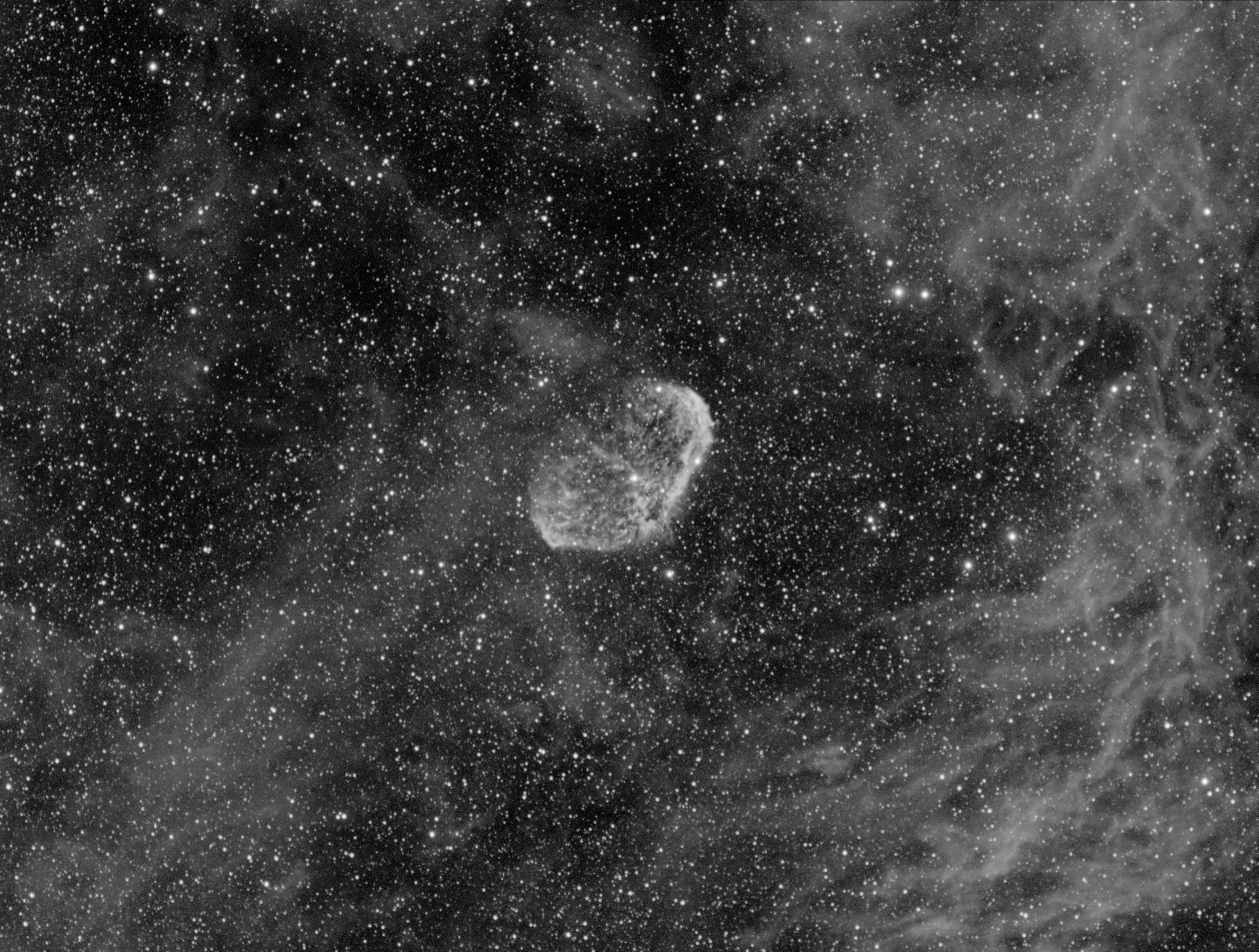Catching Cosmic Waves: Photographing the Crescent Nebula
On the night of April 22, 2022, under clear skies, I captured an image of the Crescent Nebula (NGC 6888), located in the constellation Cygnus. This emission nebula is a glowing shell of gas created by the stellar winds of its central star, WR 136—a Wolf-Rayet star nearing the end of its life.
The Crescent Nebula spans about 25 light-years across and lies approximately 5,000 light-years from Earth. Its intricate structure results from the interaction between the fast, intense wind from WR 136 and the slower material ejected during its earlier red giant phase. The result is a cosmic masterpiece of ionized hydrogen (Hα) and oxygen (OIII) glowing in striking hues.
For this image, I used my Stellarvue SV102T telescope paired with a 0.8 reducer, achieving sharp detail and a wide field of view. The ASI1600mm camera proved invaluable in capturing the faint details. The final image was a stack of sixteen 4-minute exposures, totaling over an hour of integration time. This technique revealed the nebula’s delicate filaments and sweeping arcs, which might otherwise remain hidden.
Processing in PixInsight brought out the nebula’s subtle textures and vibrant contrast, reminding me of the sheer beauty and complexity of our universe. The Crescent Nebula is a testament to the dynamic, ever-changing life cycle of stars—an ethereal glimpse into the forces shaping the cosmos.
Every time I look at this image, I am reminded why I love astrophotography: it connects us to the universe in a way that feels both intimate and infinite.
